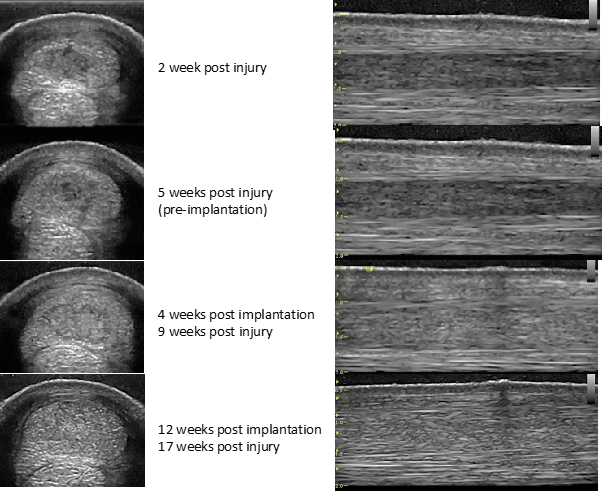RVC Stem Cell Therapies for Horses
Stem cell therapy provides a valuable treatment option for horses suffering from tendon and ligament injuries and joint disease.
Stem cells are naturally present in the body, where they are necessary for maintaining tissues and organs in a healthy state and for regeneration after injury. Because of these unique properties, stem cells are increasingly used as an innovative biological therapy for many diseases. By injecting stem cells into injured tendons, we can aid the healing process and reduce the formation of scar tissue, which reduces the chances of re-injury. Injecting stem cells into joints can also reduce pain and increase limb function in horses with osteoarthritis.
The cells we prepare are used to treat horses either at the RVC equine hospital or at external equine practices.
Stem cell application for horses
Stem cells can be used to treat the following conditions:
- Tendon injuries
- Ligament injuries
- Osteoarthritis/joint disease

Equine stem cell therapy process
Most of the equine mesenchymal stem cells that we prepare are from bone marrow aspirates, but we can also prepare the cells using a small biopsy prepared from the horse’s adipose (fat) tissue. The process involves a few simple steps:
Bone marrow samples are obtained from the horse by a qualified veterinarian. The bone marrow sample is then sent to our Veterinary Medicines Directorate (VMD) authorised stem cell laboratory at the RVC (authorisation number ESCCA-007) from which a stem-cell rich fraction is prepared. These stem cells are grown until sufficient numbers for treatment are achieved. The number of cells required depends on the size and type of injury, but typically the stem cells are ready to be injected into the injured tissue within 2-3 weeks. In the tendon they are best implanted under ultrasound guidance to ensure accurate placement within the lesion. The limb is then bandaged for seven days and the horse begins a prescribed rehabilitation programme.
Why choose the RVC for equine stem cell services?
Pioneers of regenerative medicine for horses
The use of stem cells for the treatment of tendon and ligament injuries in the horse was pioneered at the RVC by Professor Roger Smith in 2002. Since then the RVC has been at the forefront of developing stem cell therapies for treating tendon, ligament and joint injuries in horses, resulting in the treatment of many thousands of horses worldwide and has continued to research and develop the science behind cell based therapies, with the publication of over 35 scientific papers in the last 15 years.
- Dr Jay Dudhia - published papers
- Prof Roger Smith - published papers
- Dr Debbie Guest – published papers
Research into veterinary stem cell applications is ongoing – see Stem Cell Therapy
The combined expertise of clinical and scientific experts at the RVC means that we have substantial knowledge in the field of regenerative medicine. In addition, we have access to internationally renowned state-of-the-art facilities including our on-site Equine hospital and laboratories, where we continue to develop new cell therapy treatments.
Exceptional Quality Standards
To ensure that the stem cells that we prepare are of the highest quality, we apply quality control measures that monitor the product for sterility and for markers of stem cells. The RVC Stem Cell Centre is one of only a handful of UK centres licenced by the VMD for the preparation of equine stem cells. Under the rigorous requirements of the VMD, this authorisation allows us to prepare autologous mesenchymal stem cells for their clinical use in the horse.
Further Information
- Information about RVC Equine Stem Cell Services for Vet Professionals
- Stem Cell Treatments for Horses – Owner's FAQ
- Research and scientific articles information about stem cell treatments for horses
- Equine stem cell treatment case studies
